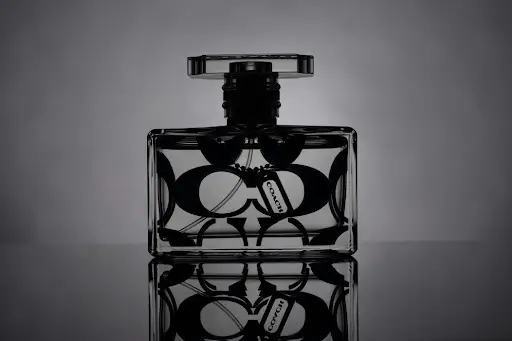Consumers are drawn to images that resonate with their emotions, not just their logic. That’s where emotion-driven product photography comes in. It goes beyond all the simple angles and lighting to tell a story, one that invites viewers to connect, relate, and ultimately trust the brand. Want to know how you can achieve this?
In this blog, we’ll break down easy-to-use techniques that help you capture feelings, not just features. Without any delay, let’s get straight into it!
Pre-Shoot Considerations
Understanding Your Target Audience’s Emotional Triggers
The key to photographing feelings lies in understanding your target audience. What motivates them? What are their aspirations, fears, and desires? By digging into the emotional drivers of your target audience, you can curate imagery that resonates on a deeper level.
Create a Buyer Persona:
Build a clear profile of your ideal customer. Consider their lifestyle, challenges, goals, and emotional preferences. Are they drawn to simplicity and calm, or do they respond to energy and innovation? This insight will help guide your lighting, composition, props, and tone, so the final image not only looks good but feels right to the viewer.
Identify Emotional Anchors:
Think about how your product makes people feel. Does it evoke luxury, nostalgia, excitement, or serenity? Align your photography with these emotions to create a connection.
Research Trends and Preferences:
Look at what’s trending in your specific niche. If your audience loves minimalism, your photos should reflect uncluttered, clean visuals showcasing simplicity and elegance.
Techniques for Injecting Emotion
Color Psychology:
Color is more than just an aesthetic choice; it’s a psychological trigger. In the context of marketing and branding, color can increase brand recognition by up to 80%, as reported by the University of Loyola, Maryland. When applied effectively in product photography, color can influence how consumers perceive value, mood, and even product functionality.
Warm Colors (Red, Orange, Yellow)
- Red conveys urgency, passion, and excitement. It’s ideal for high-energy brands or tech gadgets marketed to youthful demographics.
- Orange radiates fun, friendliness, and optimism, making it an excellent choice for lifestyle or sports accessories.
- Yellow sparks cheerfulness and warmth. It’s commonly used in children’s products or happy-go-lucky campaigns.
Cool Colors (Blue, Green, Purple)
- Blue is associated with trust and dependability; hence, it is widely used in the health, tech, and financial sectors.
- Green is often connected with wellness and eco-consciousness.
- Purple adds a sense of mystery or luxury, often seen in beauty and premium branding.
Neutral Colors (Gray, Beige, White)
- Gray adds authority and balance.
- Beige is a warm and understated color, perfect for natural products.
- White signifies simplicity and cleanliness.
Lighting That Brings Your Product to Life
Soft Lighting for Warmth and Comfort
Soft lighting is all about creating a gentle, welcoming feel. It reduces harsh shadows and evens out textures, which helps products look more polished and natural. This type of lighting is commonly achieved by using:
- Diffusers
- Softboxes
- Natural light from large windows
Best for:
Products like home décor, baby items, skincare, and cozy textiles. It’s perfect when you want your audience to feel relaxed, safe, or comforted.
Hard Lighting for Dynamism and Drama
Hard lighting brings intensity. It utilizes sharp shadows and high contrast to accentuate shapes and details, resulting in a strong, attention-grabbing appearance. You can get this effect using:
- Undiffused light (like a bare bulb)
- Direct spotlights
- Flash with no softening tools
Best for:
High-impact products such as sneakers, watches, metal tools, bold perfumes, or modern tech gear. It’s ideal when you want to project strength, power, or an edgy vibe.
Composition: Arranging Elements to Tell a Story
Composition plays a key role in guiding the viewer’s eye and shaping their emotional response. When done right, it helps your product shine while creating a deeper connection with your audience. Here are some tried-and-true composition techniques that bring emotion and meaning to your shots:
Rule of Thirds: Creating Balance and Focus
The rule of thirds divides your image into a 3×3 grid—nine equal parts. By placing your product along one of the lines or at the intersection points (instead of in the dead center), you make the photo feel more balanced and engaging.
Why it works:
- It draws the viewer’s eye naturally.
- It adds a sense of movement and purpose, even in still images.
- It creates space for supporting elements, like props or text.
Negative Space
Negative space is the empty area around your subject. While it might seem like “nothing,” it’s actually a powerful design tool. It brings clarity to your composition, allowing the product to stand out without distractions, and works great for minimalist or brand product photography.
Why it works:
- Highlights the product as the clear focal point.
- Evokes feelings of calm, elegance, and focus.
- Reinforces minimalist, premium, or eco-conscious branding.
Layering and Depth
Photos with depth feel more lifelike. By placing elements in the foreground, middle ground, and background, you can create a scene that feels immersive and natural.
Why it works:
- Gives your image a 3D, tactile feel.
- Helps set the scene or tell the product’s story.
- Adds visual interest without crowding the subject.
Motion and Interaction
Showing your product in use adds human connection and emotional depth. Whether it’s a hand applying lotion or sneakers mid-stride, interaction tells a story your audience can relate to.
Why it works:
- Makes the image feel alive and relatable.
- Builds trust by showing the product in action.
- Encourages the viewer to picture themselves using it.
Texture and Material Contrast:
Texture in photography isn’t just about visual detail; it’s about creating a sensory experience. While viewers can’t physically touch the product, showing textures clearly helps them imagine how it would feel in their hands. This tactile impression fosters trust, enhances emotional connection, and enhances the product’s perceived quality.
How to Use Texture Effectively
- Use Close-Up Shots to Showcase Detail
Zooming in on fabrics, surfaces, or small design features helps highlight their texture. For example:
- A tight shot of a knit sweater can show its cozy weave.
- A macro view of a wooden product can emphasize natural grain and craftsmanship.
These details make the product feel more tangible and high-quality.
- Mix and Match Textures for Contrast
Combining different textures in one scene can create visual interest and emotional contrast. For example:
- A velvet cushion placed on a rough concrete surface draws attention to softness.
- A glossy perfume bottle resting on a matte wooden shelf feels elegant and grounded.
This is especially powerful in ghost mannequin product photography, where texture and shape take center stage without model distractions.
Best For:
- Apparel and textiles (e.g., scarves, blankets, baby clothes)
- Skincare and self-care products
- Natural or handmade goods (e.g., woodcraft, ceramics, soaps)
- Luxury items that benefit from tactile appeal
Transform Your Photography, Transform Your Brand
Your product photos are more than just visuals; they’re experiences waiting to happen. If you’re ready to see the difference this approach can make, start experimenting with these techniques. Test a range of color palettes, lighting setups, and compositions to determine which one sparks the most connection with your audience.
Need some guidance? Elena Vels Studio specializes in high-impact product photography from beauty to fashion to lifestyle brands. We help businesses create emotionally resonant imagery that sells. Visit us today to start transforming your brand through stunning photography. Your story deserves to be seen and felt.


